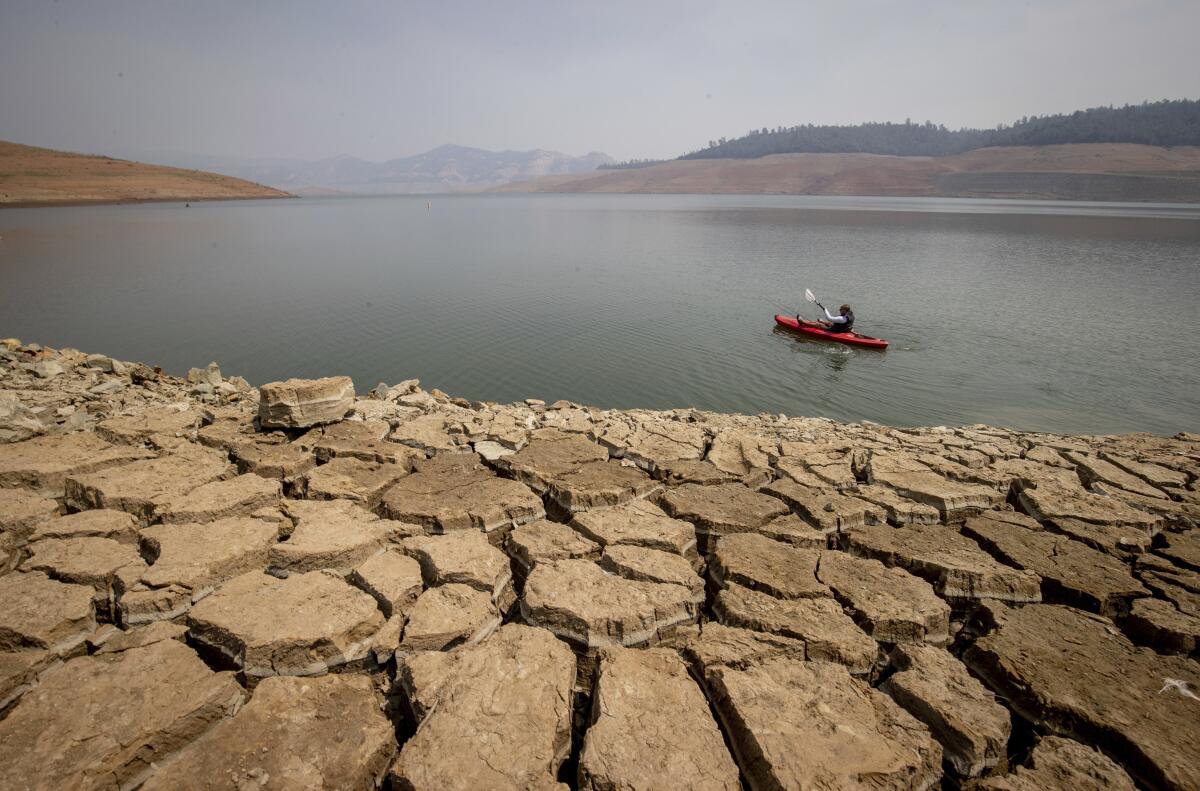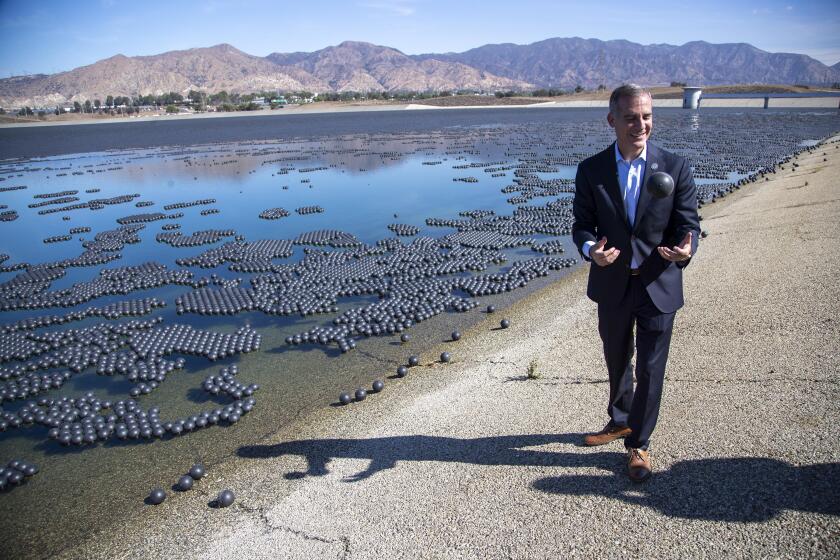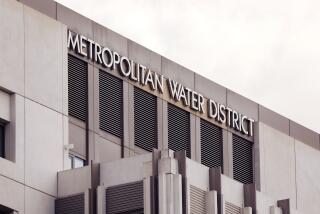California water districts will get no requested supplies from the state

SACRAMENTO, Calif. — California water agencies that serve 27 million residents and 750,000 acres of farmland won’t get any of the water they’ve requested from the state heading into 2022 other than what’s needed for critical health and safety, state officials announced Wednesday.
It’s the earliest date the Department of Water Resources has issued a 0% water allocation, a milestone that reflects the dire conditions in California as drought continues to grip the nation’s most populous state and reservoirs sit at historically low levels. State water officials said mandatory water restrictions could be coming.
“If conditions continue to be this dry, we will see mandatory cutbacks,” Karla Nemeth, director of DWR, told reporters.
A complex system of reservoirs, canals and dams called the State Water Project supplies water to 29 districts across the state. The districts have a maximum amount they can request each year, and the allocation represents how much the state can give based on available supplies.
The allocations are adjusted in early winter and spring depending on how much snow and rainfall the state receives. Last year, the state’s second driest on record, districts’ allocation went from 10% in December down to 5% by March. The only other time since 1996 that districts have been granted nothing was in January 2014, during the last drought.
L.A. will use more Colorado River water to reduce reliance on the hard-hit supplies from the State Water Project.
Seven districts that requested it will get a small amount of water — about 340,000 acre feet total — from the state for critical health and safety needs, such as fire suppression or indoor sanitation. That’s a fraction of the more than 4.2 million acre feet of water the system is designed to supply, Nemeth said.
One of the districts that will get some water for health and safety is the Metropolitan Water District in Southern California, the state’s largest customer, supplying water to about 19 million people. About a third of its supply comes from the state, with the rest coming from the Colorado River and elsewhere. It declared a drought emergency in November and mandated that people conserve water. Some of its member agencies in northern Los Angeles and Ventura counties rely almost exclusively on state supplies for their water.
“We are working with our member agencies serving those communities ... to make sure residents and businesses understand the severity and complexity of the situation and are responding by reducing their water use as much as necessary,” Adel Hagekhalil, the district’s general manager, said in a statement. “At the same time, Metropolitan will continue doing everything we can to get water from other sources to these communities.”
It’s rare for districts to get all or nothing, and the amount typically goes up from the first December estimate to May, after winter storms have ended.
Amid the dry conditions, Gov. Gavin Newsom proclaimed a statewide drought emergency in October and urged people to save water. But the voluntary conservation efforts are falling far short of what he requested.
Meanwhile, Lake Oroville, the largest reservoir in the State Water Project, is at 30% capacity, about half of where it normally is this time of year.
More to Read
Sign up for Essential California
The most important California stories and recommendations in your inbox every morning.
You may occasionally receive promotional content from the Los Angeles Times.










